
How to Get a Job: 10 Tips to Find the Job You Want
Discover top strategies on how to get a job, whether you're a career switcher or a first-timer. Make your job search a breeze with our complete guide & tips.
Our customers were hired by:
Many thoughts come across your mind when you start writing a cover letter. “Do I really need it?”, “It’s going to be hard, so maybe I’ll just skip it.” Or, sometimes, you sit down, and your mind suddenly goes blank.
Luckily, it doesn’t have to be this way.
This guide will teach you how to write a cover letter for a job application. Not only that, I’ll help you go through the process of writing your cover letter quickly and easily. With our expert tips on how to write a good cover letter for a job, you’ll be able to illustrate your skills and wow the recruiters.
Use the LiveCareer cover letter builder and your cover letter will write itself. Choose a professional template, answer a few easy questions and the creator will generate a professional cover letter for you with just one click.
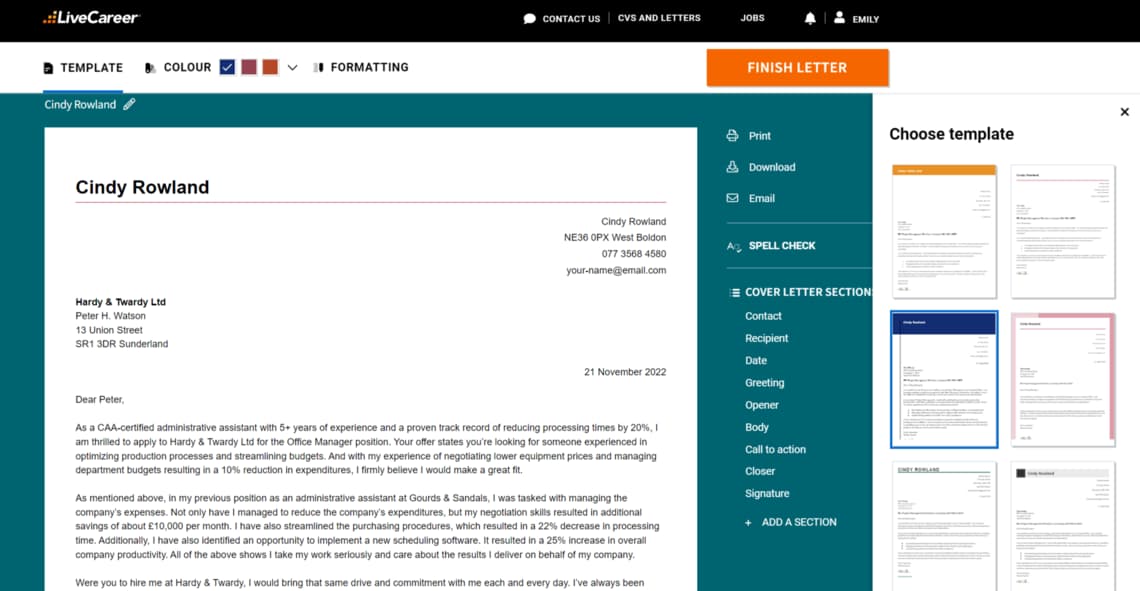
Seeking more guidance on cover letter writing and job searching? These guides might help:
A cover letter is an essential part of your job application and should always accompany your CV unless explicitly stated otherwise by the employer. It provides a chance to introduce yourself, explain your interest in the position, and highlight how your skills and experience align with the job requirements.
If you’re applying online, your cover letter can be sent as part of the email body or uploaded as a separate document, depending on the application process. For paper applications, a printed cover letter should be included with your CV.
When learning how to write a great cover letter, focus on showing your enthusiasm and demonstrating that you’ve taken the time to learn about the company. To personalise your cover letter and make it stand out, research the company through various sources, such as:
Now, let’s go through a step-by-step process of creating a cover letter documentso you know exactly how to prepare one in the UK:
Addressing your cover letter may seem an easy task, but if you don’t know who you’re writing to, your cover letter is as good as none at all.
Usually, here’s where you come across the first hurdle. It’s easy to find the data about the company, but what about the recruiter? If it’s not written in the job ad, I recommend you check the company’s LinkedIn page and website. You may even call the company and ask them yourself. That would surely show your determination.
[Your First and Last Name]
[Your Job Title]
[Your Address]
[Phone Number]
[Email Address]
[LinkedIn Profile URL]
[Date of Writing]
[Hiring Manager’s First and Last Name]
[Hiring Manager’s Professional Title]
[Name of Company]
[Company Street Address]
[City, Postcode]
Mind you, starting a cover letter with the phrase: to whom it may concern, only shows your laziness. This isn’t what you want to show, is it? Dear [Hiring Manager’s Name], looks much better and sets you apart from other candidates instantly.
If your efforts at finding the addressee are futile, you should still not write your cover letter salutation as “to whom it may concern.” Dear Hiring Manager or, better yet, Dear IT/Marketing/Customer Service Team Manager are infinitely better options.
If pursuing a more traditional career, e.g. at a law firm or a university, go with their title (e.g., Mr., Ms., Mrs., Dr.) and their last name to be on the safe side. Otherwise, using their first name is a great way to grab the reader’s attention.
If the recruiter is a woman, and you don’t know their marital status, start with Ms. It’s a neutral term that will help you avoid a potential misunderstanding.
And the last thing. Unlike a USA cover letter, UK cover letters require your full address. So don’t forget to add it when writing a cover letter in the UK.
A strong CV summary will convince the recruiter you’re the perfect candidate. Save time and choose a ready-made personal statement written by career experts and adjust it to your needs in the LiveCareer CV builder.
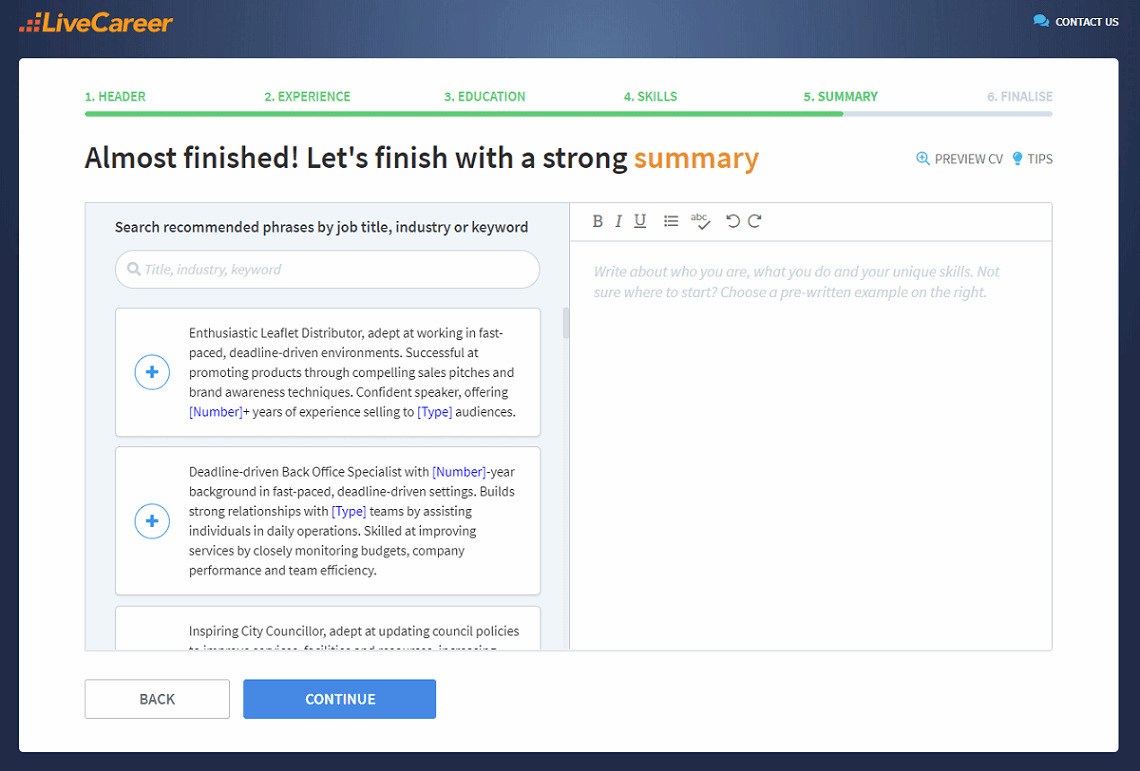
Just like with a CV summary, you want to present yourself in great light in the very first paragraph of your cover letter. So, what to write in a cover letter opening?
As a CAA-certified administrative assistant with 5+ years of experience and a demonstrated ability to reduce processing times by 20%, I am thrilled to apply to Hardy & Twardy Ltd as an Office Manager. Your offer states you’re looking for someone experienced in optimizing production processes and streamlining budgets. With my experience of negotiating lower equipment prices and managing department budgets resulting in a 10% reduction in expenditures, I firmly believe I would make a great fit.
The example offers a concise yet comprehensive framework for crafting an impactful cover letter. It's centred on a straightforward formula: introducing yourself effectively, articulating your unique value proposition, specifying the desired position with a personal touch by mentioning the company's name, and finally, explaining why you're the ideal candidate.
That’s all you need to tell your reader at this point.
Important things to note here—open up with one or two of your greatest achievements. It’s best to see the job description to determine what your employer would deem the most relevant. When writing your cover letter, display those achievements in the first paragraph.
Remember to always refer to the company you’re applying to by name at least once. You don’t want to send a generic cover letter, but a personalised one.
Next comes your professional experience and key skills. When described effectively, they can significantly boost your chances of securing an interview. The keys to writing this cover letter section are relevance and proof. Learning this rule by heart will help you in writing a perfect cover letter.
The example below shows you exactly how to write a cover letter that highlights your skills:
As mentioned above, in my previous position as an administrative assistant at Gourds & Sandals, I was tasked with managing the company’s expenses. Not only have I managed to reduce the company’s expenditures, but my negotiation skills resulted in additional savings of about £10,000 per month. I have also streamlined the purchasing procedures, which resulted in a 22% decrease in processing time. Additionally, I have also identified an opportunity to implement a new scheduling software. It resulted in a 25% increase in overall company productivity. All of the above shows I take my work seriously and care about the results I deliver on behalf of my company.
Why is this so effective? Every single thing is relevant to the job offer. This approach ensures that every aspect of your cover letter is directly relevant to the position you're applying for, underscoring your suitability for the role. Additionally, incorporating quantifiable metrics and statistics further reinforces the tangible impact of your skills and experiences.
But how to write a cover letter with no experience? You can still create a compelling second paragraph by focusing on transferable skills, educational achievements, internships, volunteering, or personal projects. The key is to draw connections between these experiences and the requirements of the job.
For example, if you’re applying for an administrative assistant role but don’t have prior work experience, highlight instances where you demonstrated organisational capabilities or other skills employers look for. Use examples from school, community activities, or personal initiatives to show your potential.
Last but not least, the second paragraph of a cover letter should be the longest. If you have a lot of relevant work achievements, you may even choose to separate it into two smaller paragraphs for readability.
You don’t have to be a CV writing expert. In the LiveCareer CV builder you’ll find ready-made content for every industry and position, which you can then add with a single click.
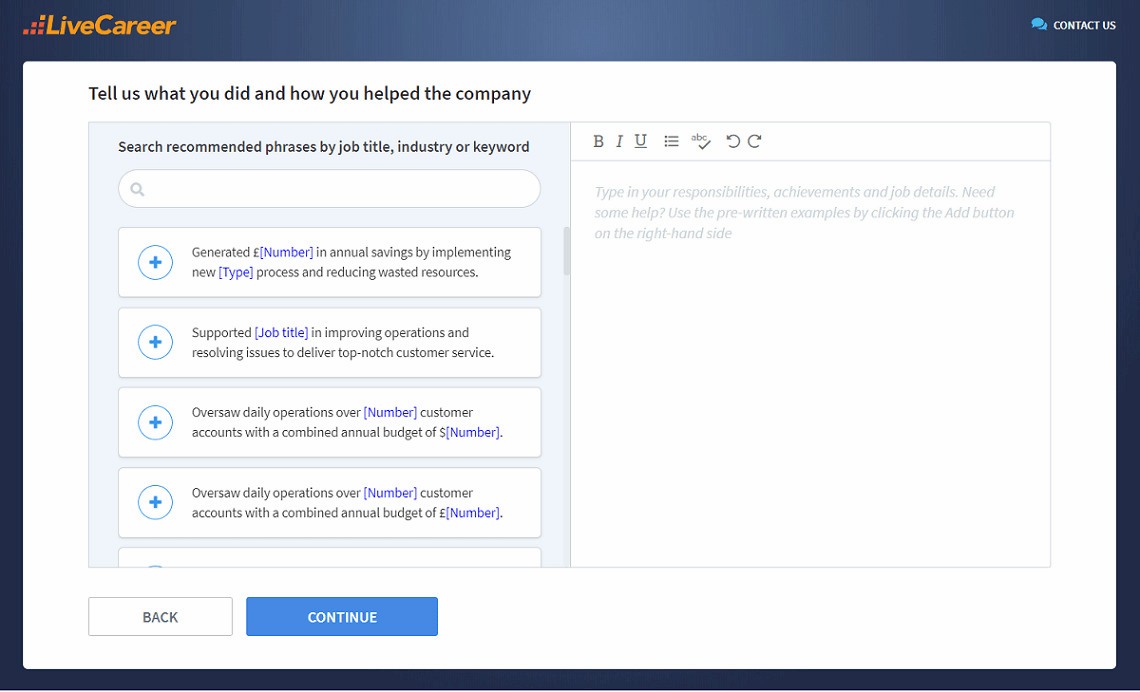
Your skills are of the utmost importance—but so is your personality. After all, you’ll be spending the better part of the week at work. So, when writing your cover letter, show the hiring manager you’re a great cultural fit and a wonderful person to collaborate with.
As you’re writing this section of your cover letter, focus on a few things. The important aspects are what you like about the company and how your personality and working style fit the company culture. Also, mention why you want to work for this particular employer and how you’ll benefit the company.
Look at the example below:
Were you to hire me at Hardy & Twardy, I would bring that same drive and commitment with me each and every day. I’ve always been drawn to your company's firm belief in empowering employees to make complicated decisions on their own when needed. I would be incredibly fortunate to be considered for the position at a company whose work and culture reflect my own.
This example shows all the previously mentioned points. The candidate showcases her drive and describes what she likes about the company she’s applying to. She shows the recruiter she’s a great fit for the company not just because of her experience but also her values.
But it’s not the end of your cover letter just yet. You still need to finish it professionally.
You’re writing the cover letter with one goal in mind—to convince the recruiter that you’re the best fit for the position. And so far, you did. But what if you get no callback?
When learning how to write a cover letter, it’s vital to put emphasis not just on the opening statement but also on the final lines. Try closing your cover letter with a line like that:
When would you have time for a quick phone call or meeting? I’d love to discuss how I could bring similar results to your company.
When writing your closing of a UK cover letter, make sure you propose how you’d like to meet and talk (e.g. a phone call, video chat, face-to-face meeting, lunch, etc.). Also, suggest a specific time to meet (e.g. this week, next week, etc.), or ask them to schedule a meeting. This makes your offer seem more urgent, and you, a more valuable employee.
Pick the recruiter’s curiosity by saying what you’d like to discuss (you can mention a specific issue if you know what the current challenges for the company are).
When concluding your cover letter professionally, opt for formal sign-offs such as “Sincerely,” “Regards,” “Yours Truly,” or “Thank You.” In cases where you address the letter without knowing the recipient's name, “Yours Faithfully” is an appropriate choice.
Conversely, avoid informal sign-offs such as “Love,” “Cheers,” “Peace,” “Bye,” or “See You Soon,” as they detract from the professional tone of the correspondence.
Here’s what the ending of your cover letter should look like:
Sincerely,
Cindy Rowland
If you’re hand-writing a cover letter, leave a few extra spaces between the complimentary closing and your name. Then, add a handwritten signature for a stylish and professional flourish.
Word of clarification—This is not a must-have part of your cover letter. A Postscript is a completely optional thing. The whole idea behind the P.S. section is to include something relevant, but you had no option to write it in any part of your cover letter.
Usually, it’s an achievement of yours you weren’t able to fit in elsewhere, a comment on the company's recent success, or a fun fact about you that proves you’re a fit. If you don’t know what to put in the postscript, you most likely don’t need it at all.
And why does a Postscript work? Because it’s something that’s so rarely used, it instantly grabs attention. Here’s an example of what the P.S. section can look like:
P.S. I’d love to tell you how I collaborated with other departments on a project that resulted in the implementation of a new internal communication system.
Make sure your cover letter follows proper formatting rules. Knowing what makes a good cover letter layout is just as important as knowing how to write a cover letter for a job.
Here’s how to best format your cover letter:
To craft a standout cover letter, you must pay attention to both content and presentation. These extra tips will help you refine your approach and increase your chances of success:
I hope these additional tips boost your confidence in crafting a compelling cover letter that strengthens your candidacy for any position you pursue.
Cindy Rowland
Administrative Assistant
8 Dipe Lane
West Boldon, NE36 0PX
078 6307 4954
your-name@email.com
linkedin.com/in/hermandrovvland
8 January 2025
Peter H. Watson
Human Resources Director
Hardy & Twardy Ltd
13 Union Street
Sunderland, SR1 3DR
Dear Peter,
As a CAA-certified administrative assistant with 5+ years of experience and a demonstrated ability to reduce processing times by 20%, I am thrilled to apply to Hardy & Twardy Ltd for the Office Manager position. Your offer states you’re looking for someone experienced in optimizing production processes and streamlining budgets. And with my experience of negotiating lower equipment prices and managing department budgets resulting in a 10% reduction in expenditures, I firmly believe I would make a great fit.
As mentioned above, in my previous position as an administrative assistant at Gourds & Sandals, I was tasked with managing the company’s expenses. Not only have I managed to reduce the company’s expenditures, but my negotiation skills resulted in additional savings of about £10,000 per month. I have also streamlined the purchasing procedures, which resulted in a 22% decrease in processing time. Additionally, I have also identified an opportunity to implement a new scheduling software. It resulted in a 25% increase in overall company productivity. All of the above shows I take my work seriously and care about the results I deliver on behalf of my company.
Were you to hire me at Hardy & Twardy, I would bring that same drive and commitment with me each and every day. I’ve always been drawn to your company's firm belief in empowering employees to make complicated decisions on their own when needed. I would be incredibly fortunate to be considered for the position at a company whose work and culture reflect my own.
When would you have time for a quick phone call or meeting? I’d love to discuss how I could bring similar results to your company.
Sincerely,
Cindy Rowland
P.S. I’d love to tell you how I collaborated with other departments on a project which resulted in the implementation of a new internal communication system.
A cover letter alone simply won’t be enough—you need an impactful CV, too. Create your CV in minutes. Just follow our wizard and fill in every CV section with ready-made content. Get started by choosing a professional CV template.
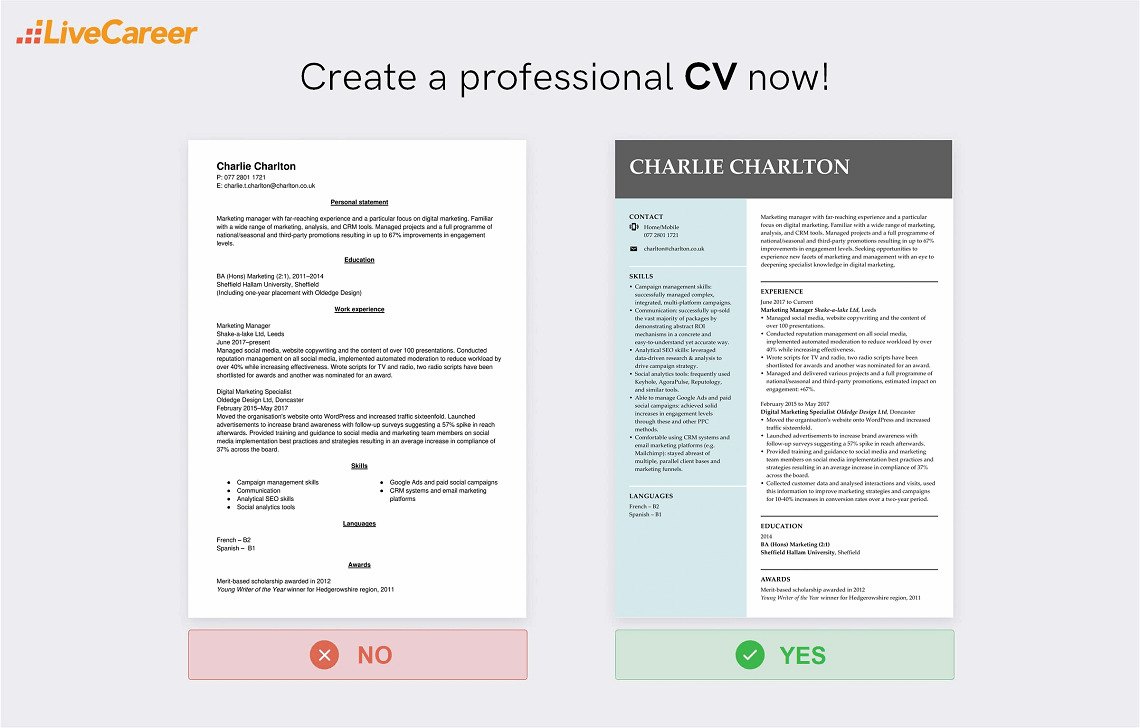
Did you like our guide on how to write a cover letter in the UK? If you’ve got any additional questions on how to write a cover letter for a job, I’d be happy to answer them below in the comments. Thanks for reading!
Our editorial team has reviewed this article for compliance with Livecareer’s editorial guidelines. It’s to ensure that our expert advice and recommendations are consistent across all our career guides and align with current CV and cover letter writing standards and trends. We’re trusted by over 10 million job seekers, supporting them on their way to finding their dream job. Each article is preceded by research and scrutiny to ensure our content responds to current market trends and demand.
About the author
Since 2013, the LiveCareer UK team has shared the best advice to help you advance your career. Experts from our UK editorial team have written more than one hundred guides on how to write the perfect CV or cover letter.
Rate this article:
How to write a cover letter
Average:
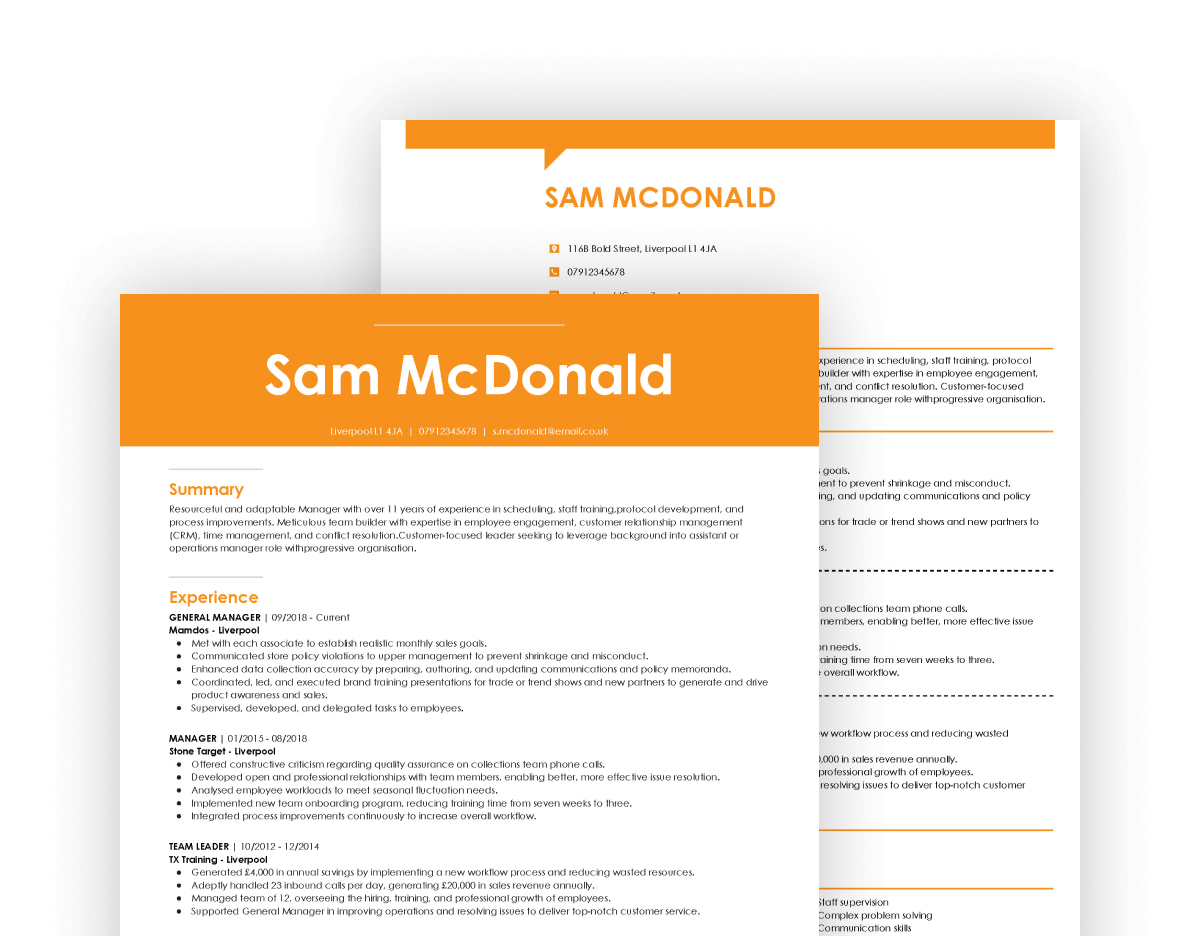

Discover top strategies on how to get a job, whether you're a career switcher or a first-timer. Make your job search a breeze with our complete guide & tips.

How to find a job in London and get to the lively streets of this vibrant city? See how to win a job in 7 steps and learn tips to boost your employability.

See the top 50 highest-paying jobs in the UK for 2025 across different industries. Explore salary ranges, job descriptions, and expectations.
Our customers were hired by:
